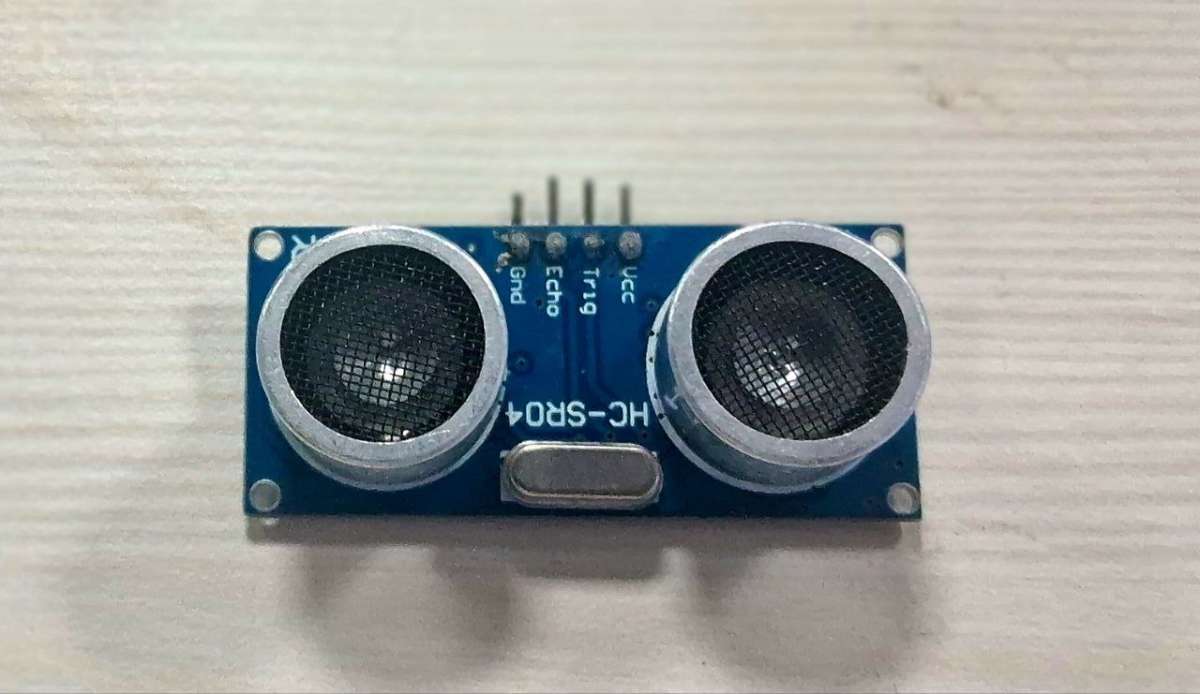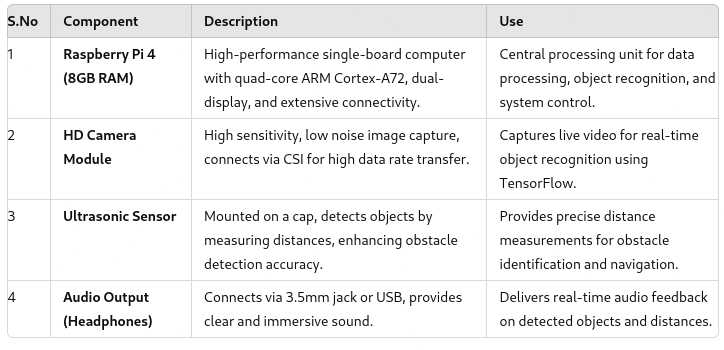INTRODUCTION:
Our project aims to enhance the mobility and safety of visually impaired individuals by developing an AI-based voice assistance system. This system uses advanced technologies to detect obstacles and provide real-time audio feedback, allowing users to navigate safely without external assistance.
PRODUCT SCOPE:
Our project detects obstacles that could be hazardous to visually impaired people while they walk outside. It can identify objects such as stairs, bikes, and people, alerting users if these obstacles are within a certain range. The system uses a live feed from the camera and provides audio output when objects are detected between 0-70 cm.
PRODUCT OBJECTIVE:
This product is designed to significantly enhance the lives of visually impaired individuals by:
- Making their daily navigation easier and safer.
- Preventing accidents by alerting users to potential hazards.
- Helping visually impaired people maintain a safe and secure life.
PROJECT WORK FLOW:

KEY FEATURES:
1. Using TensorFlow and a Raspberry Pi Camera for Object Recognition:
Concept: Achieve precise and efficient object detection using TensorFlow.
Method: Train a deep learning model (like MobileNet) to recognize a range of everyday objects, or use a pre-trained model. Integrate TensorFlow with the Raspberry Pi Camera for real-time inference.
Benefits: TensorFlow's robust object identification capabilities provide a reliable means of recognizing items in the surrounding environment, enhancing user awareness.
2. Ultrasonic Distance-Measuring Sensor:
Concept: Incorporate an ultrasonic sensor for accurate distance readings.
Method: Attach an ultrasonic sensor to the Raspberry Pi to provide precise distance measurements in addition to visual data.
Benefits: Providing accurate distance information increases the model's awareness and ensures safer navigation.
3. System of Text-to-Speech Feedback
Concept: Implement text-to-speech technology for audio feedback.
Method: Convert distance measurements and objects identified by TensorFlow into spoken sentences using Raspberry Pi's audio capabilities.
Benefits: Offer users real-time, informative audio feedback, enhancing their understanding of their surroundings.
COMPONENTS:
1. Raspberry Pi 4 Model B (8GB RAM):
A high-performance single-board computer featuring a quad-core 64-bit ARM Cortex-A72 processor, dual-display support, and extensive connectivity options, ideal for a wide range of applications.
.png)
2. High Definition Camera Module:
Compatible with all Raspberry Pi models, this module offers high sensitivity and low noise image capture. It connects via the CSI connector for high data rate pixel data transfer.
.png)
3. Ultrasonic Sensor:
Mounted on a cap, the ultrasonic sensor effectively detects objects by measuring distances, enhancing obstacle detection accuracy.

4.Audio Output:
Headphones can be used to get audio output from the Raspberry Pi. They connect via the 3.5mm audio jack or USB, providing clear and immersive sound for various applications.
LIST OF COMPONENTS AND ITS USES:

Scalability of the Vision Assist System:
The Vision Assist System has significant potential for scalability and enhancement. By establishing a community platform, users can contribute real-time obstacle data, which can be used to continuously improve object detection accuracy through machine learning updates. This collaborative approach ensures the system evolves with diverse input, making it more robust and reliable over time. Transitioning from the Raspberry Pi 4 to a dedicated motherboard designed specifically for this function can further enhance performance and efficiency. A custom board would integrate seamlessly with all components, reducing latency, improving power consumption, and allowing for more advanced processing capabilities. Additionally, incorporating accident detection features would add a crucial layer of safety. The system could be equipped with sensors to detect falls or collisions, automatically sending alerts to a designated caretaker with the user's location and status. This functionality enhances user safety and provides peace of mind for their loved ones.
In summary, through community engagement, hardware optimization, and added safety features, the Vision Assist System can scale effectively, providing a comprehensive and reliable aid for visually impaired individuals.
Intellectual Property (IP) Considerations:
We claim an innovative wearable device capable of detecting obstacles using artificial intelligence techniques. Our invention, "Voice Assistance for Blind People Using AI-Based Raspberry Pi," is designed to effectively identify obstacles in real-time. As outlined in Claim 1, the obstacle detection system is developed using Raspberry Pi. In Claim 2, this device is suitable for applications such as detecting obstacles and providing information about the nature of these obstacles. These claims form the foundation of our intellectual property strategy, ensuring protection and exclusive rights to our unique technological approach. By securing these claims, we aim to prevent unauthorized use and reproduction, fostering an environment conducive to further innovation and development in assistive technologies for the visually impaired.
Future Developments:
Future development of the Vision Assist System aims to incorporate several advanced features to enhance its functionality and reliability. One key enhancement is the integration of accident detection capabilities, allowing the device to detect falls or collisions and automatically alert a designated caretaker with the user's location and status. Additionally, using a gimbal or optically stabilized camera will provide a more accurate and stable video feed, improving object recognition and detection accuracy. Waterproofing the entire setup will ensure durability and reliable performance in various weather conditions, expanding the usability of the device. These advancements will significantly enhance the safety, precision, and robustness of the Vision Assist System, making it a more comprehensive and dependable aid for visually impaired individuals.
DESIGN/ARCHITECTURE:
.png)
